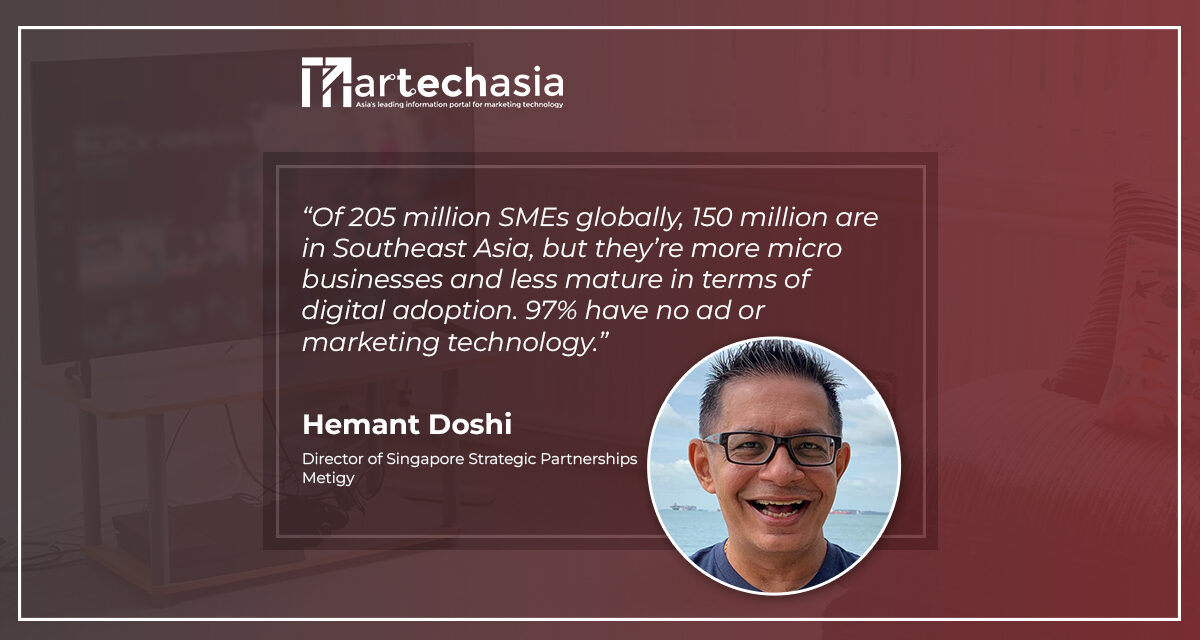As the world continues to navigate pandemic-induced uncertainties and chart a path to sustained recovery, SMEs need to act now to future-proof their competitive advantage.
As the adage goes, adversity brings out the best in us. By now we’re all aware that the pandemic encouraged businesses to strengthen their digital capabilities and adopt technologies to ensure business continuity. This is especially true for SMEs, many of which have smaller budgets to work with. These businesses are now past the fight or flight response stage and are shifting their focus to reshape themselves to fit into this new normal and adapt to the changing modern consumer paradigm.
It is simply not enough to incorporate traditional marketing techniques anymore. The modern customer is overwhelmed with information online and is time poor. Consumer behavior has rapidly evolved to the point that we’re looking beyond sales figures. Social listening, analytics and data monitoring are among some of the essential tools to aid companies understand and keep track of consumer sentiments.
Weathering the COVID-19 storm
In response to the global pandemic and in a flurry to adapt to changes, SMEs in Singapore quickly adopted very surface-level digital marketing and social media tools to reach their customers. For example, online retail is no longer limited to global brands. Local, homegrown brands are finding their way through online platforms and even social media.
But how many are actually reaching the right customers? How many SMEs looked at the root of the current problem they were facing? Of 205 million SMEs globally, 150 million are in Southeast Asia, but they’re more micro businesses and less mature in terms of digital adoption. 97% have no ad or marketing technology. In fact, an IDC-Cisco study found that in Singapore, although digital awareness is high, it is yet to translate into desired levels of maturity. The issue lies in translation of products because SMEs here work differently from more developed markets where they’re more rational and they’re thinking about digital marketing. There simply aren’t the skills here to be able to solve that problem so the solution is to lead with technology.
Leading with Artificial Intelligence (AI) in marketing
Artificial intelligence (AI) is the perfect application for marketing. Because it is about the ability to be able to process large volumes of data and make insight-led decisions on that data faster than a human. That gives businesses the ability to be truly creative and fine-tune their products and marketing messages accordingly – a move that is crucial to thrive in the new normal.
So how can SMEs use AI to effectively get in front of the right customers? By constantly monitoring different channels and tracking how campaigns are performing, AI systems can help strategize the optimal cost, timing and platform for brand advertising. AI also has the power to support targeted campaigns by analyzing data about your core audience demographic, including their interests, preferences and keyword searches. This data can then be leveraged to run digital campaigns and help your business to reach other audiences who are similar to your core target set.
Standing out in a cluttered marketplace
Today, customers are targeted with more advertising than ever before. Brand engagement and content needs to be relevant to their requirements and appeal to their aspirations. But the dynamic nature of social media can be difficult for brands to navigate. Consumers are beginning to demand more value from SMEs on their social channels in return for time and investment.
Knowing your customers on social media is crucial, considering the vast amount of information they are exposed to. Social listening allows you to gather data to fuel aspects of your strategy. Businesses should utilize this information to make sure that what they are posting appeals to their customers and reaches them at the right time. How best can you do this most effectively? Again, with the help of AI.
Thanks to AI, social media has become a strong arsenal in your engagement armory. Social media marketing predictions, aided by AI, can help you identify the top-performing methods of posting to give your business an organic boost. But it is important to look at different metrics for different platforms. At the end of the day, your business will use social media analytics to analyze each social media post’s effectiveness and impact. However, tracking data on an excel spreadsheet is time-consuming. Using AI to track your social media analytics allows you access to informative data and actionable insights to better reach more of your target audience in real-time and develop a better understanding of your customer.
As the world continues to navigate pandemic-induced uncertainties and chart a path to sustained recovery, SMEs need to act now to future-proof their competitive advantage. They need to connect to a marketing stack that is affordable and logical, helping one bring all their data sources into a recommendation engine for insights-led decision making.
Digital is the way forward and investing in the right digital marketing technologies can be the perfect springboard for SMEs to finally see challenges from the past two years recede into the rearview mirror.



















